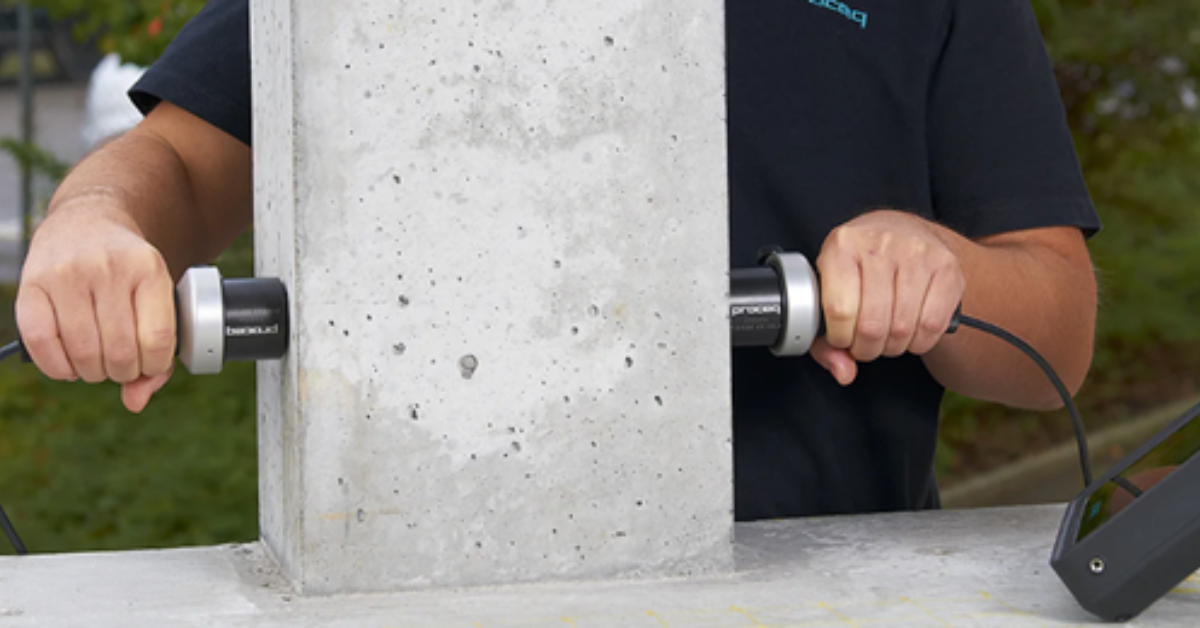Non-Destructive Testing Methods for Assessing Concrete Integrity

Concrete integrity is paramount in construction, necessitating meticulous evaluation methods that don't compromise its structure. Advanced non-destructive testing (NDT) techniques offer a sophisticated array of tools for this purpose.
At Wimpey Laboratories, our tests aim to unveil the hidden aspects within concrete structures through a thorough examination of advanced non-destructive testing (NDT) techniques. By referring to these methods as "unseen," we underscore the ability of NDT to reveal internal flaws, weaknesses, and structural characteristics that may not be apparent through visual inspection alone.
1. Ultrasonic Testing (UT):
UT employs high-frequency sound waves to penetrate concrete, revealing internal flaws and providing precise measurements of thickness and uniformity. This method is pivotal for detecting voids, cracks, and delamination’s without damaging the structure. By analyzing the echoes reflected from internal defects, engineers can accurately assess the condition of concrete elements, allowing for targeted repairs and maintenance.
2. Ground Penetrating Radar (GPR):
GPR utilizes electromagnetic pulses to penetrate concrete, mapping out subsurface features such as rebar, voids, and variations in material properties. It's invaluable for assessing concrete cover thickness and identifying potential hazards. GPR can provide detailed images of the concrete structure's internal composition, aiding in the identification of anomalies and facilitating informed decision-making during construction or rehabilitation projects.
3. Impact-Echo Testing:
By analyzing the echoes generated from mechanical or acoustic impulses on concrete surfaces, impact-echo testing detects flaws, voids, and delamination’s with exceptional accuracy. It offers insights into structural integrity and aids in targeted repairs. This method is particularly useful for evaluating concrete bridges, tunnels, and other infrastructure where surface access is limited, allowing for comprehensive assessments without the need for extensive dismantling or excavation.
4. Electrical Resistivity Testing:
This technique measures concrete's electrical resistance to assess its permeability, moisture content, and susceptibility to corrosion. Variations in resistivity pinpoint areas of concern, guiding maintenance efforts to prevent deterioration. By monitoring changes in electrical resistivity over time, engineers can identify potential durability issues early on, enabling proactive maintenance measures to be implemented to extend the service life of concrete structures
5. Rebound Hammer Test:
A portable and widely used method, the rebound hammer test provides quick assessments of concrete strength by measuring surface hardness. While not as precise as other techniques, it offers valuable insights into structural integrity. Rebound hammer testing is often employed for quality control purposes during construction to ensure that concrete meets specified strength requirements and to identify areas of potential weakness that may require further investigation.
6. Acoustic Emission Testing:
Monitoring transient stress waves within concrete structures, acoustic emission testing detects the onset and progression of defects like cracking or corrosion. It's particularly useful for continuous monitoring of critical infrastructure. Acoustic emission testing can be deployed for long-term structural health monitoring, allowing engineers to detect and address issues before they compromise the safety or performance of concrete structures, thereby minimizing maintenance costs and reducing the risk of unexpected failures.
These advanced NDT methods empower engineers to conduct thorough evaluations of concrete integrity, facilitating proactive maintenance and ensuring the long-term resilience of concrete structures against various environmental and operational challenges. With their non-invasive nature and precise diagnostic capabilities, these techniques serve as indispensable tools in modern construction practices, enabling the creation of safer and more durable infrastructure worldwide. By leveraging the insights provided by advanced NDT methods, engineers can optimize the design, construction, and maintenance of concrete structures, ultimately enhancing their performance, durability, and sustainability throughout their service life.
In conclusion, NDT techniques serve as powerful tools for uncovering critical information about concrete integrity, guiding decision-making processes, and ensuring the long-term safety and durability of concrete structures.
To learn more about concrete testing and other Wimpey Laboratories services, please contact us.
Latest News

03.05.2024
Zimbabwe Minister of Industry and Commerce visits Wimpey Lab and Cotecna UAE
The Zimbabwe Minister of Industry and Commerce Honourable Ndhlovu recently led a delegation visiting Cotecna and Wimpey Laboratories in the UAE.

01.05.2024
Cotecna participated in CESCO WEEK 2024
The CESCO WEEK 2024, one of the most important events in the mining industry in the world, took place from April 15-19 in Santiago Chile.

